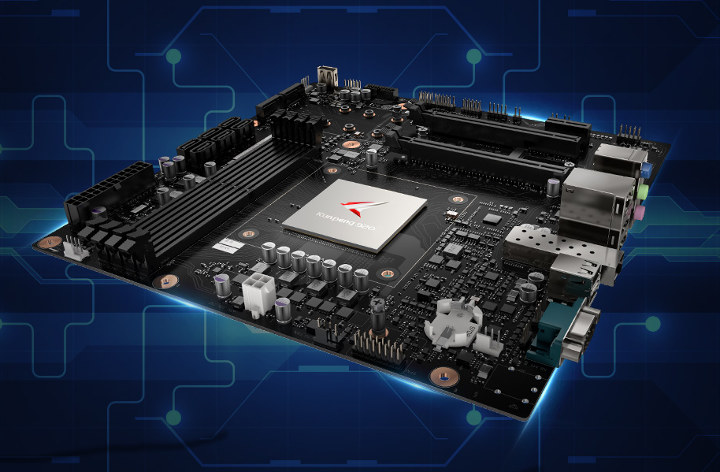Huawei Kunpeng 920 is an Armv8 server SoC with up to 64 cores that can be found in the company’s TaiShan series servers.
But the company has now designed “Kunpeng Desktop Board” featuring the quad or octa-core version of Kunpeng 920 SoC, in order to create Arm-powered desktop computers.

Kunpeng Desktop Board (model D920S10) preliminary specifications:
- Processor – Kunpeng 920 processor with 4/8 cores at up to 2.6 GHz
- System Memory – 4x DDR4-2400 UDIMM slots for up to 64 GB RAM
- Storage – 6x SATA 3.0 hard drive interfaces, 2x M.2 SSD slots
- Connectivity – 2x LOM (LAN on Motherboard) NIC supporting Gigabit Ethernet network ports or optical ports
- USB – 4x USB 3.0 and 4x USB 2.0 ports
- Audio – Combo with 3x 3.5mm audio jacks
- Serial – DB9 connector
- Expansions – 1x PCIe 3.0 x16, 1x PCIe 3.0 x4, and 1x PCIe 3.0 x1 slots
LOM Network Ports - Misc – RTC
- Power Supply – 20-pin ATX connector
The board supports Linux desktop operating systems, and Huawei can provide reference designs for the chassis, heat dissipation solution, and power supply. The Kunpeng Desktop Board is said to be compatible with mainstream hardware such as memory, hard drives, and network interface cards, but somehow there’s no mention of graphics card support. I suppose some will work, as it would be hard to make a desktop PC without video output…
They also offer some metrics for performance, reliability and power efficiency with “56 Gbit/s high-speed SerDes (HSS) for 25% higher motherboard performance”, a “signal bit error rate (BER) lower than 10-12 for 15% fewer failures than the industry average” and an “Innovative Dynamic Energy Management Technology (DEMT) for over 15% better efficiency than the industry counterpart”. Those claims are rather meaningless, as I have no idea what they are comparing their motherboard to.
There may be a bit more information on the product page, but so far we don’t have any details about availability nor pricing. You can request pricing, but you’ll need to leave your contact details, and provides a project summary and your budget.

Jean-Luc started CNX Software in 2010 as a part-time endeavor, before quitting his job as a software engineering manager, and starting to write daily news, and reviews full time later in 2011.
Support CNX Software! Donate via cryptocurrencies, become a Patron on Patreon, or purchase goods on Amazon or Aliexpress




